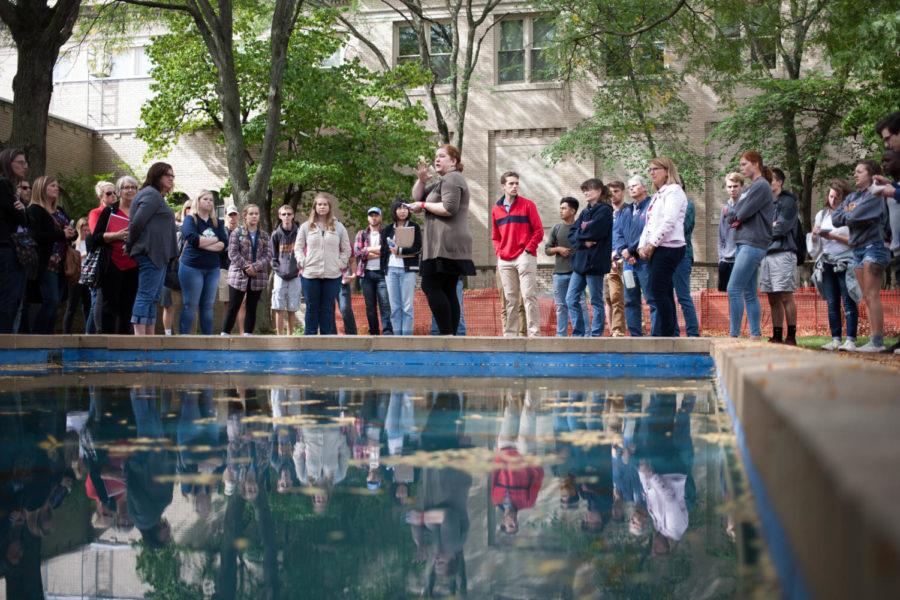Monthly UM Art Walk explores campus landmarks and sculptures
September 28, 2017
University Museums held their monthly Art Walk around campus on Wednesday, September 27. The event invited participants to look at prominent public art works around campus, and imagine the Iowa State campus without these iconic sculptures.
The walk began in the Food Sciences Building courtyard, where campus outreach coordinator Erin O’Malley told visitors about Christian Petersen and his connection to the Iowa State campus.
Petersen was hired to be an artist-in-residence in 1934. While at Iowa State, Petersen taught one of the few Home Economics classes that was co-ed. Despite home economics being primarily for women at the time, many men would take his classes for a chance to interact with members of the opposite gender.
“There were a lot of marriages that came out of Petersen’s sculpture class,” O’Malley said.
When Petersen was hired, it was the middle of the Great Depression. Many of Petersen’s works along with those works of fellow artist Grant Wood were created through the WPA, or the (whatever WPA means). This program, which lasted for about 6 months, created jobs for struggling artists across the country.
One of these projects was a large terracotta mural and fountain titled “The History of Dairying”. The mural depicts the evolution of dairy farming in Iowa, from smaller farms and hard-working families in the 1800s to a more commercialized and industrialized operation in the 1930s.
Petersen was an artist in residence at the university until 1955. He created over 12 major works across campus, and his mural was the only large mural project completed under the WPA.
During his time on campus, Petersen also created the “Fountain of the Four Seasons”, located on the north side of the Memorial Union. While the finished sculptures depict Native American women representing each of the four seasons, Petersen’s original idea was rejected by the university.
“His initial idea for this was several dancing Grecian women, who would be partially clothed as part of the style of that time. The administration didn’t like that, so they told him to find something else,” O’Malley said.
Petersen based the statue on the Meskwaki tribe, and each of the four women represent a season by a certain activity they are doing: planting a seed, tending a plant, harvesting, or holding a child.
The walk moved to “Left-Sided Angel” by Stephen DeStaebler, a sculpture outside the library, which many students told O’Malley they had never noticed before. When students on the walk were asked to describe the sculpture, they used words like “war”, “unfinished”, and “grotesque”. O’Malley said that members of the campus community had similar reactions to the abstract sculpture, and its 1986 installation generated controversy.
“People often think art has to be this beautiful thing, and they thought this was ugly. They were used to Christian Petersen, and this was unfamiliar, so they reacted against it,” O’Malley said.
The unfinished look was done by DeStaebler because the library was viewed as a place of learning and development, and the angel represents the transformation and change that students undergo when they are learning.
Similarly, “Transformation” by Albert Paley on the east side of Morrill Hall was also controversial when it was first installed. Morrill Hall was remodeled and reopened in 2007, and as part of the Art in State Buildings Program, money from the restoration was given towards a work of art. Some viewers felt that it was wrong to put new, abstract art on a historical building, but the large metal sculpture was intended to represent the evolution of students during their time at Iowa State.
“When you enter a university, you have different backgrounds, you come from different places, but when you leave, you’ve formed friendships and a kind of community,” O’Malley said.







